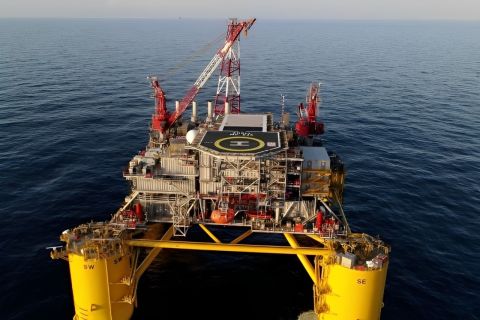
Bernstein analysts discussed the pros, cons and aspects of the cash flow debate.
As third-quarter earnings calls for exploration and production companies (E&Ps) rolled in over the past couple of weeks, Bernstein Research highlighted in a note a theme of particular interest to shareholders: what companies fortunate enough to have prospects for free cash flow planned to do with it. And, what should they do with it?
While there’s no cookie-cutter answer, of course, E&Ps have traditionally preferred to reinvest extra dollars into drilling budgets or other growth strategies, and/or debt reduction. There’s always been a tension about whether more free cash should be funneled to shareholders.
Bernstein analysts discussed pros and cons “sparked by at least two management teams considering that question in recent releases [Cabot Oil & Gas Corp. (NYSE: COG) and Anadarko Petroleum Corp. (NYSE: APC)].”
Anadarko said in its call that its 2018 budget was based on $50 oil, and that higher commodity prices would generate free cash flow, not higher capital spending.
“This latter piece is a significant departure from typical capital allocation strategy and messaging in the E&P sector,” Bernstein observed. “It raises the prospect of further cash return to shareholders in addition to the current $2.5 billion buyback program.”
The company’s executives said it would manage for high returns on capital rather than to hit a specific growth target, according to the Bernstein note.
A Tudor, Pickering & Holt & Co. (TPH) note about earnings said that Cabot’s stock has “been on a tear since the third-quarter call as management hammered home the 2018 to 2020 FCF profile, implying significant cash returns to shareholders.
“While the company highlighted $2.5 billion of pre-tax Marcellus FCF through 2020, we model about $1.8 billion after taking into account cash taxes, corporate general and administrative expenses and financing costs. Assuming the current run rate of about $100 million of annual dividends continues, the remaining approximately $1.5 billion could be used for share buybacks [about 12% of current market cap] or additional increases to the dividend.”
TPH also discussed the cash situation of Continental Resources Corp. (NYSE: CLR), whose year-end production guidance far surpassed consensus “with 2018 not being budgeted towards free cash flow. Interestingly, management stated that this exit rate positions CLR for strong, cash-flow positive growth in ‘18, signaling a shift from spending at cash flow for the next few years, with FCF proceeds likely going to the balance sheet. We now see CLR generating about $1 billion of free cash flow at the strip in 2018, which will go towards paying down debt…”
Bernstein focused on four aspects of the cash flow debate. “We believe cash return makes sense in limited circumstances, and that the thinking behind a blanket initiative has a few fundamental flaws,” the analysts said.
First is the “fallacy” of growth vs. returns. “We have shown that growth within cash flow and returns are mathematically one and the same,” they said.
Second, they took the scenario of E&Ps returning 20% of operating cash flows to investors to its logical conclusion. Proponents think this strategy would tamp down production, raise commodity prices and hike returns on capital. “But this isn’t a sustainable market balance in a commodity business,” Bernstein noted. A high return on capital would attract more equity capital, IPOs and start-ups. “Capital markets always find a way to compete away returns in a commodity business.”
Third, E&Ps might think they signal to the market that they are “better capital allocators” if they return cash flow, but the analysts said that “among E&Ps paying dividends, the highest forward returns have been generated by those with the lowest dividends.”
Finally, the Bernstein analysts pointed out that “the last dollar a high-quality operator spends will generate a better return than the first dollar spent by a low-quality operator.”
Cabot, which is limited by takeaway constraints, “is an ideal situation for a significant cash return program,” Bernstein said, as are operators with low quality assets. “At the end of the day, any E&P with compelling investment opportunities should reinvest its cash flow.”
Recommended Reading
E&P Highlights: Nov. 18, 2024
2024-11-18 - Here’s a roundup of the latest E&P headlines, including new discoveries in the North Sea and governmental appointments.
McKinsey: Big GHG Mitigation Opportunities for Upstream Sector
2024-11-22 - Consulting firm McKinsey & Co. says a cooperative effort of upstream oil and gas companies could reduce the world’s emissions by 4% by 2030.
EY: How AI Can Transform Subsurface Operations
2024-10-10 - The inherent complexity of subsurface data and the need to make swift decisions demands a tailored approach.
E&P Highlights: Oct. 7, 2024
2024-10-07 - Here’s a roundup of the latest E&P headlines, including a major announcement from BP and large contracts in the Middle East.
Breakthroughs in the Energy Industry’s Contact Sport, Geophysics
2024-09-05 - At the 2024 IMAGE Conference, Shell’s Bill Langin showcased how industry advances in seismic technology has unlocked key areas in the Gulf of Mexico.
Comments
Add new comment
This conversation is moderated according to Hart Energy community rules. Please read the rules before joining the discussion. If you’re experiencing any technical problems, please contact our customer care team.






